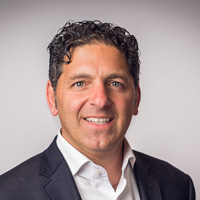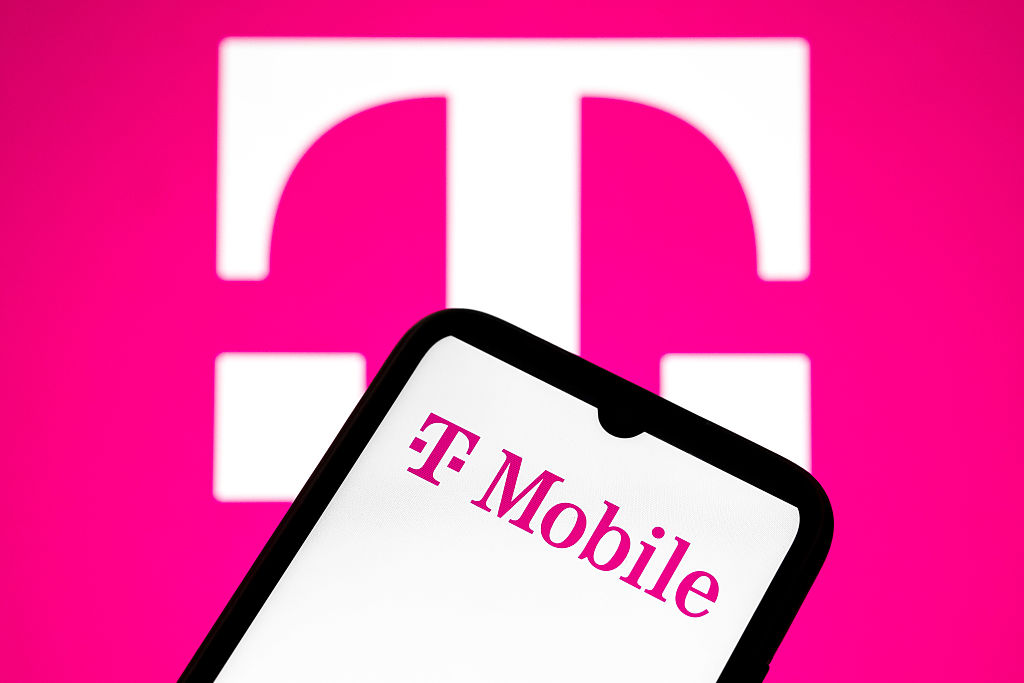Kick Your Cash Off the Couch: Here's How to Prevent Inflation From Eating Your Savings
Instead of letting your cash sit idle in low-return accounts, consider putting it to work in growth-oriented investments to protect your long-term buying power.


The latest figures show inflation is proving sticky, even as the Federal Reserve keeps interest rates elevated.
Here's how inflation can quietly eat into your money — whether it's in a savings account, the ultra-safe G Fund in your Thrift Savings Plan (TSP) or a conservative 401(k) money market account — and what you can do about it.
Inflation is a strange and sneaky thing. Unlike market downturns, which can wipe out visible chunks of your investments overnight, inflation does its damage quietly — slowly eroding your purchasing power over time.
From just $107.88 $24.99 for Kiplinger Personal Finance
Become a smarter, better informed investor. Subscribe from just $107.88 $24.99, plus get up to 4 Special Issues

Sign up for Kiplinger’s Free Newsletters
Profit and prosper with the best of expert advice on investing, taxes, retirement, personal finance and more - straight to your e-mail.
Profit and prosper with the best of expert advice - straight to your e-mail.
About Adviser Intel
Kiplinger's Adviser Intel is a curated network of trusted financial professionals who share expert insights on wealth building and preservation. Contributors, including fiduciary financial planners, wealth managers, CEOs and attorneys, provide actionable advice about retirement planning, estate planning, tax strategies and more. Experts are invited to contribute and do not pay to be included, so you can trust their advice is honest and valuable.
You may not see dramatic headlines about it every day, but its impact can be just as harmful. You don't see your account balance drop, but what that money can buy shrinks steadily. Many don't notice until they pay for a full grocery cart or book a vacation.
While inflation has averaged about 2.5% over the long haul, in recent years it has climbed well above that — peaking at over 9% at one point and still hovering uncomfortably high.
Even though today's high interest rates mean your savings might finally earn more — say 4% in a CD or G Fund — that's just keeping you treading water, not moving ahead.
To illustrate the damage inflation can do: If inflation averaged just 3.5% annually for 20 years, $100,000 in cash would lose nearly half its value in real terms, effectively shrinking to $50,000 of buying power.
That's the silent threat inflation poses — and why it deserves more attention.
When the Fed talks about "cooling inflation," it may be technically true for parts of the economy — but many everyday consumers still feel the pinch. If you're raising kids, paying for health insurance or just buying groceries, it may not feel like prices have eased much.
My wife and I have a family of five — three growing kids with big appetites — and let me tell you, a trip to the grocery store is still a shock to the wallet. At Trader Joe's, I swipe that card and routinely break the $100 mark even though I went in for just a few items.
Prices haven't returned to where they were. They're still high, and in many categories, they've just leveled off at a new normal.
Don't ignore inflation: Deal with it
Inflation is persistent. It's quiet but relentless — and it's still one of the biggest threats to your savings. Even with money market accounts and high-yield savings accounts now paying 3% to 4%, that brings you close to breaking even only after inflation.
If large portions of your money are sitting in bank accounts or in the G Fund earning 4% while inflation is at 4%, you're not growing — you're preserving at best. But if your rate is under 3%, you're actively losing value.
Yes, we all need an emergency fund. Six months of gross income in a savings account is a wise and practical reserve. But for many people, much more cash than that is sitting idle — in IRAs, 401(k)s, TSPs or taxable accounts — earning minimal real returns.
Massive savings or CD balances may feel "safe," but they can quietly work against your long-term financial goals. No one ever heard of someone getting rich from savings accounts.
Safety is an emotional comfort. The bank never forgets your balance. It always says the same number. But the buying power of that number changes — and often declines.
Since the 2008 financial crisis and again during the COVID era, we have become used to near-zero interest rates. That created a sense of helplessness for savers.
Even now, although interest rates have risen sharply, the memory of low yields still lingers. But this environment has changed, and the opportunity cost of doing nothing is real.
Even the TSP recognizes the inflation risk
The federal TSP has long understood that inflation is a structural threat to long-term savings. The G Fund is designed to never lose principal and to keep pace with inflation. It invests in short-term U.S. Treasury securities specially issued to the TSP.
Right now, its yield may look attractive — often north of 4% — but even that may not be enough to stay ahead if inflation remains persistent.
This is why the most conservative of the TSP's Lifecycle Funds, the L Income Fund, includes 27.25% stock exposure, with slowly increasing exposure until 2028. The Thrift Board has steadily raised the stock allocation in these funds to reflect the reality that even conservative savers need some growth. And more than 5.5% is in the bond F Fund.
The message is clear: Being too cautious may be just as dangerous as being too aggressive.
Get your money off the couch and back to work
Think of your idle cash like an adult child who lives at home, lounges on the couch and doesn't contribute. You wouldn't let them stay there forever doing nothing. They need to get up, clean their dishes, put their dirty laundry in the washing machine and get going.
So why let your money do the same? It's time to get it up, get it active and put it to work.
Looking for expert tips to grow and preserve your wealth? Sign up for Adviser Intel, our free, twice-weekly newsletter.
There are ways to do this without taking excessive risk. Inside the TSP, it could mean shifting part of your allocation to the C Fund or S Fund.
Outside of TSP, it might mean exploring low-volatility ETFs, dividend strategies or fixed-income alternatives designed to at least keep pace or even outpace inflation.
For large cash balances, the goal should simply be to stay ahead of inflation. That might mean trading some liquidity (ability to access funds quickly) for long-term purchasing power.
It might also mean rethinking the role of "safety" in your portfolio. What feels safe today could become a liability tomorrow if inflation keeps eroding your future income.
Final word: Don't wait
Inflation is not a short-term trend — it's a long-term threat. And it's one that doesn't go away just because we ignore it. So don't sit on the sidelines hoping it resolves itself.
For goodness' sake, get a plan. Get help. And make sure that help comes from a fiduciary who understands your retirement goals.
The sooner you act, the better off you — and your money — will be.
Related Content
- How to Invest at Each Stage of Your Life
- 11 Ways to Grow Your Wealth
- 4 Ways a Massive Emergency Fund Can Hurt You More Than It Helps
- 6 Quick Money Moves to Make Before the Year Ends
- Where You Choose to Stash $100k Now Comes with a Big Opportunity Cost
Profit and prosper with the best of Kiplinger's advice on investing, taxes, retirement, personal finance and much more. Delivered daily. Enter your email in the box and click Sign Me Up.

Charles Dzama has devoted nearly two decades to educating and guiding federal employees — helping them navigate their retirement benefits and plan for a successful retirement. He is the author of Being a Federal Employee in the Era of Trump, a timely book that examines the unique challenges and opportunities presently facing federal employees. The book will be available for download and in physical form starting December 15, 2025, on Amazon.
-
 Are T-Mobile's Prepaid Perks a Home Run or a Strikeout?
Are T-Mobile's Prepaid Perks a Home Run or a Strikeout?T-Mobile's prepaid lineup promises MLB.TV, T-Mobile Tuesdays and hotspot data. But do the perks make it worth switching?
-
 Verizon Home Internet Is Offering Free Tech to New Customers
Verizon Home Internet Is Offering Free Tech to New CustomersVerizon’s latest home-internet promotion includes free tech, but the real savings depend on pricing, speed needs and how long you stay.
-
 Retirees in These 7 States Could Pay Less Property Taxes Next Year
Retirees in These 7 States Could Pay Less Property Taxes Next YearState Taxes Retirement property tax bills could be up to 65% cheaper for some older adults in 2026. Do you qualify?
-
 The November CPI Report Is Out. Here's What It Means for Rising Prices
The November CPI Report Is Out. Here's What It Means for Rising PricesThe November CPI report came in lighter than expected, but the delayed data give an incomplete picture of inflation, say economists.
-
 I'm 73, Retired, and Dreading Winter, But I Can't Afford to Be a Snowbird. Help!
I'm 73, Retired, and Dreading Winter, But I Can't Afford to Be a Snowbird. Help!How can a snowbird wannabe warm up without the expense? We asked professional wealth planners for advice.
-
 5 Smart Things to Do With Your Year-End Bonus, From a Financial Professional
5 Smart Things to Do With Your Year-End Bonus, From a Financial ProfessionalAfter you indulge your urge to splurge on a treat, consider doing adult things with the extra cash, like paying down debt, but also setting up a "fun fund."
-
 Are You a Gen X Investor? Here's How You Can Protect Your Portfolio From an AI Bubble
Are You a Gen X Investor? Here's How You Can Protect Your Portfolio From an AI BubbleAmid talk of an AI bubble, what's the best course of action for investors in their 50s and 60s, whose retirement savings are at risk from major market declines?
-
 Hey, Retirees: Put Your Charitable Gifts in a Donor-Advised Fund (and Enjoy Your Tax Break)
Hey, Retirees: Put Your Charitable Gifts in a Donor-Advised Fund (and Enjoy Your Tax Break)A donor-advised fund is a simple (really!), tax-smart strategy that lets you contribute a large, tax-deductible gift now and then distribute grants over time.
-
 Nasdaq Sinks 418 Points as Tech Chills: Stock Market Today
Nasdaq Sinks 418 Points as Tech Chills: Stock Market TodayInvestors, traders and speculators are growing cooler to the AI revolution as winter approaches.
-
 The Rule of Compounding: Why Time Is an Investor's Best Friend
The Rule of Compounding: Why Time Is an Investor's Best FriendDescribed as both a "miracle" and a "wonder," compound interest is simply a function of time.
-
 The 7-Month Deadline That Determines Your Lifetime Medicare Premiums
The 7-Month Deadline That Determines Your Lifetime Medicare PremiumsUnderstanding Medicare enrollment is crucial, as missing deadlines can lead to permanent late enrollment penalties and gaps in coverage.